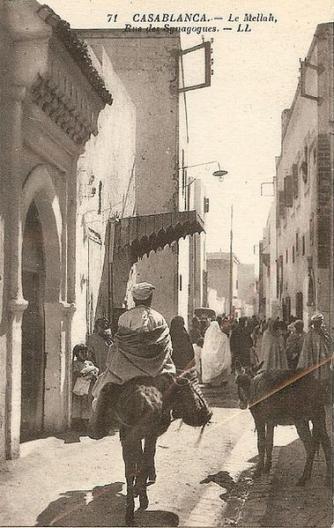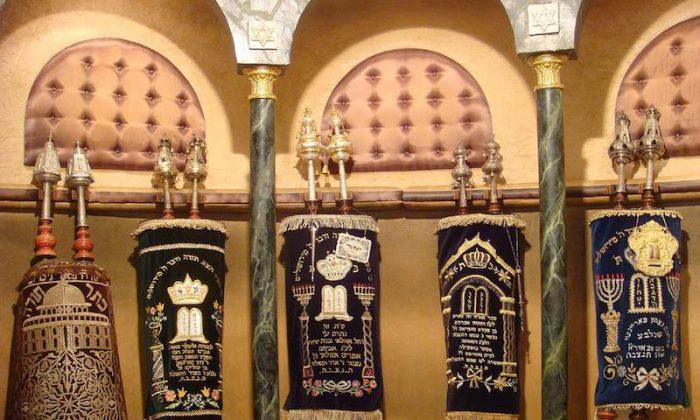Originally published on www.JourneyBeyondTravel.com
Morocco was once home to the largest population of Jews in the Arab world, a figure topping 300,000 inhabitants. Today the number has largely diminished but many of the historical sites have remained intact and offer a glimpse into a part of Moroccan culture that is unique to the region. While the relationship between Muslim and Jewish residents has had ups and downs, the legacy and richness of Morocco’s Jewish population remains a national treasure.
Berber Jewish History
Morocco’s original inhabitants, the Berber people, have called the land that is now Morocco home as far back as 10,000 B.C. Before the arrival of Islam Berbers were animist, Jewish, or Christian. Many Jewish Berbers called the mountains of the Atlas Mountains home and lived side by side with their Muslim tribesmen. In small Berber villages there are still reminders of the Jewish past, even though the people themselves have left. In Ourigane there are several tombs of revered rabbis at the Shrine of Haim ben Diourne. Yearly in May there is a festival or moussem where the faithful come to pay their respects.
Sijilmasa on the northern edge of the Sahara desert is a small outpost near the city of Rissani. During the Middle Ages this town was an important trading post, especially in the gold trade. Today the town is mostly in ruins.
In the foothills of the Middle Atlas Mountains, the small city of Sefrou just outside of Fez also played an important role on trade routes. At one time this cultural crossroads was one of the few Moroccan cities with a high Jewish population. One of the interesting sites here is the Em Habanim network of Jewish Moroccan schools and an orphanage. The network provided education to Jewish Moroccans for 5 decades. Today the sites can be visited but they are no longer operational as the Jewish population of the city has left. The mellah area of Sefrou can be visited but is now inhabited by the Muslim population.
The Mellah
The term “mellah” is used to describe the area of a city in which Jewish residents live. There is some dispute among academics about the meaning of the word. Some claim that it simply denotes a Jewish area of the city, while others attribute it to the Arabic word “mel'ha” or salt. Historically Jewish residents were tasked with salting the dismembered heads of enemies captured in conflict leading to this possible connection.

The first mellah was established in Fez in 1438 to protect Jewish residents from invaders. This walled area was located near the palace to better protect residents and to provide access to the palace. Many Jewish Moroccans served as advisors, ambassadors, and other political positions. Although Jewish residents were protected they did not have the same rights as Muslim citizens. There were restrictions on the trades they could enter and in some cases where they could live.
One interesting way to tell whether the homes were Jewish owned or Muslim owned can be discovered in construction techniques. Muslim-owned homes may have an exterior-facing window while Jewish-owned ones typically had exterior-facing windows with balconies that opened to the street. After Moroccan independence and the emigration of a large percentage of Morocco’s Jewish population, the traditional mellah disintegrated. Some cities retain some remnants of the past such as a cemetery or synagogue but very few Jewish residents remain.
Essaouira
Essaouira is one of the most unique cities in Morocco when it comes to Jewish history. During the 18th century it was one of only two ports in Morocco open to European trade (the other being Tangier). Sidi ben Abdallah the then sultan settled many Jewish families in the city then known as Mogador.
The trade status opened the city to many merchants and the population rose in such a way that the number of Jewish and Muslim residents was nearly even. Even though there are very few Jews remaining in Essaouira there are some historical sites that can be visited. Every September there is a pilgrimage to the site of the grave of Rabbi Chaim Pinto whose home and synagogue remain preserved and open to visitors. The Jewish cemetery is well kept and features unique tombstones carved with human forms, which is contrary to Jewish tradition.
Chefchaouen
In the Rif Mountains Chefchaouen was founded as a fortress city to protect the region from Portuguese invasions. During the Spanish Reconquista the population grew with moriscos and Jews who were escaping Spanish persecution. Today, the city is best known for its blue color. Beginning in the 1930’s houses, doors, stairs, and passageways are painted in different shades of blue by the cities Jewish residents. The exact reason why the painting began is unclear but even after the cities Jewish residents left, those remaining have kept up the blue color.
Museum of Moroccan Judaism
In Casablanca the Museum of Moroccan Judaism is the only museum of its kind in the Arab-speaking world and one of two museums devoted to Judaism in a Muslim country. The city is home to approximately 3000 Jewish residents, has 30 synagogues, and several Jewish/Hebrew schools. The museum has a permanent display that relates to the history, culture, and artifacts associated with Moroccan Jewry. A variety of different exhibits showcase pieces from around the country. Music and literature are also included. Instead of focusing on differences between the faiths, the museum is a study in what unites the various religions of Morocco.
Exploring Jewish Sights in Morocco
Whether you want to explore Jewish Morocco or discover the pieces of Jewish society that continue today, our team can help you plan a historical and cultural adventure of a lifetime; contact us today to begin planning!
Copyright © 2014 by Journey Beyond Travel. This article was written by Amanda Ponzio-Mouttaki and originally published on journeybeyondtravel.com.





Friends Read Free